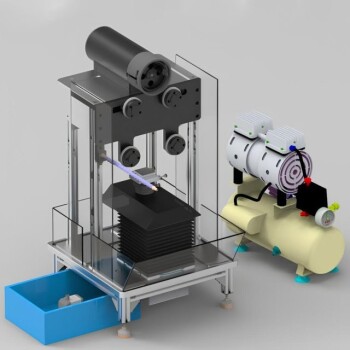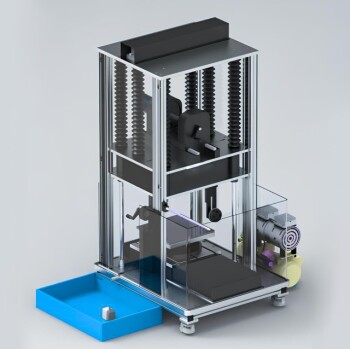Introduction to Lab-Grown Diamonds
Lab-grown diamonds, also known as synthetic diamonds, are man-made diamonds produced in a laboratory setting. These diamonds are created using advanced technology that simulates the high-pressure and high-temperature conditions that occur naturally in the Earth's mantle. Lab-grown diamonds have the same physical and chemical properties as natural diamonds, and they are becoming increasingly popular due to their ethical and environmental benefits. They are also more affordable than natural diamonds, making them a great option for couples looking for an affordable engagement ring or wedding band.
Table of Contents
Benefits of Lab-Grown Diamonds
Lab-grown diamonds have become increasingly popular over the years due to their ethical and environmental benefits.
Environmentally Sustainable
One of the most significant benefits of lab-grown diamonds is their environmental sustainability. The process of growing diamonds in a lab requires considerably less energy than digging them out of the ground. There is also no need to displace tons of earth to create a lab-grown diamond, making them more environmentally friendly than natural diamonds.
Ethically Sourced
Lab-grown diamonds are also ethically sourced. With lab-grown diamonds, you can be almost 100% certain of their origin. Unlike natural diamonds, lab-grown diamonds are not associated with conflict or “Blood” diamonds, which can support wars or child labor. This is a big advantage for consumers who are concerned about ethical sourcing.
More Affordable
Another significant benefit of lab-grown diamonds is their price. Lab-grown diamonds are approximately 30-50% less than natural diamonds, which means you can purchase a significantly larger diamond for the same price as a smaller natural diamond. The price of lab-grown diamonds has dropped over the past few years, making them more accessible to consumers than ever before.
Same Physical and Chemical Properties
Lab-grown diamonds have the same physical and chemical properties as natural diamonds, which means they are just as dazzling. When compared with natural diamonds of the same size, clarity, and cut, lab-grown diamonds cannot be detected by the naked eye.
Fashionable
Lastly, if you’re all for becoming a trendsetter in the fashion scene, opting for a lab-grown diamond over a natural diamond can illustrate your impeccable taste as well as your conscious mind. This notion is further supported by a study conducted by Vogue in May 2021, which found that 69% of its audience stated sustainability is an important factor when making a fashion purchase.
In conclusion, lab-grown diamonds have many benefits, including environmental sustainability, ethical sourcing, affordability, same physical and chemical properties as natural diamonds, and fashionability. All these benefits make lab-grown diamonds a great option for those looking for a sustainable and ethical alternative to natural diamonds.
Drawbacks of Lab-Grown Diamonds
Lab-grown diamonds have gained popularity among buyers as a more ethical and cost-effective alternative to natural diamonds. However, there are some drawbacks to consider when deciding between lab-grown and natural diamonds.
Lack of Emotional Significance
One of the most significant drawbacks of lab-grown diamonds is the lack of emotional significance compared to natural diamonds. Natural diamonds are formed over millions of years and are often associated with romance and commitment. Lab-grown diamonds, on the other hand, are created in a laboratory and lack the same sentimental value as natural diamonds.
Lower Resale Value
Another potential drawback of lab-grown diamonds is that they may not hold their value as well as natural diamonds. While natural diamonds are a rare and finite resource, lab-grown diamonds can be produced in larger quantities, making them less valuable. As a result, lab-grown diamonds may have a lower resale value compared to natural diamonds.
Limited Availability of Larger Diamonds
The process of creating larger lab-grown diamonds with fewer impurities is more complex and energy-intensive, making them more expensive to produce. As a result, lab-grown diamonds larger than two carats are still relatively uncommon and often come with a higher price tag than smaller lab-grown diamonds.
Energy Consumption
While lab-grown diamonds are marketed as a more environmentally friendly alternative to natural diamonds, the process of creating them still requires a significant amount of energy. The high-pressure, high-temperature method used to create lab-grown diamonds is energy-intensive and can contribute to greenhouse gas emissions.
In conclusion, lab-grown diamonds have their advantages and disadvantages. While they are a more ethical and cost-effective alternative to natural diamonds, they may lack the same sentimental value and hold a lower resale value. Additionally, their production process requires a significant amount of energy and can result in impurities. Ultimately, the decision between lab-grown and natural diamonds depends on individual values and priorities.
CVD Diamonds and Their Benefits
Chemical Vapor Deposition (CVD) is one of the two most popular methods for creating lab-grown diamonds. CVD diamonds are grown in a vacuum chamber where a gas mixture is pumped in and heated, creating a carbon plasma that deposits on a substrate to form a diamond. Here are some benefits of CVD diamonds:
Purity and Quality
One of the main benefits of CVD diamonds is their purity. They can have fewer impurities than HPHT diamonds because they are grown in a controlled environment. In laboratories, lab-grown diamonds are formed under strict measures and are made under the supervision of expert eyes, ensuring that the diamonds are flawless. This makes CVD diamonds an excellent choice for people who want high-quality diamonds that are free of any impurities.
Large Size
CVD diamonds can be produced in larger sizes, making them ideal for industrial applications. This is because the CVD process uses a small diamond seed as a starter, and then builds on this seed over time. As a result, larger diamonds can be produced over a longer period, which is not possible with HPHT diamonds.
Cost-Effective
CVD diamonds are less expensive to produce than mined diamonds. The cost of creating a CVD diamond is much less than the cost of mining and transporting a natural diamond, and that’s to say nothing of the additional human and environmental costs associated with diamond mining. Moreover, CVD diamonds are cheaper than HPHT diamonds, as the latter requires more energy to operate due to its extreme temperature and pressure requirements. As such, CVD diamonds offer a much more affordable price tag than natural or HPHT diamonds.
Versatility
Due to their versatility, CVD diamonds have become a popular choice in the diamond industry. They are used not only in jewelry but also in many industrial applications, such as cutting tools, electronics, and optics. CVD diamonds are also used in scientific research because of their high purity and clarity.
Environmental and Ethical Advantages
CVD diamonds have environmental and ethical benefits over natural diamonds. The cost of mining diamonds from the ground goes well beyond dollars. The ecological and ethical issues associated with diamond mining create a lasting negative impact worldwide. Illegally traded mined diamonds used to fund conflict in war-torn areas are “conflict diamonds” (or even “blood diamonds”). Some diamond mines operate under terrible conditions, leading to worker injuries or even human-rights violations. CVD diamonds don’t come from mines and are not used to fund conflict. They also create almost no mineral waste, making them an eco-friendlier option.
In conclusion, CVD diamonds are an excellent choice for those who want high-quality, pure, and cost-effective diamonds. They are also versatile and have environmental and ethical advantages over natural diamonds.
Comparison of CVD and HPHT Methods
Introduction
Lab-grown diamonds have become increasingly popular in recent years as a sustainable and ethical option to natural diamonds. The two most popular methods of producing lab-grown diamonds are Chemical Vapor Deposition (CVD) and High-pressure High-temperature (HPHT). This section will provide a comparison of these two methods, including their advantages and disadvantages.
CVD Method
CVD involves growing diamond crystals from a gas mixture. The process takes about 4 to 6 weeks, and growth time directly affects the final diamond size. CVD diamonds have a higher clarity and are free of metallic inclusions. However, they tend to have a yellowish or brownish tint, and the color of the diamond must be improved using HPHT method.

Advantages of CVD Method:
- Lower equipment set-up costs than HPHT technology
- The carat weight is usually higher
- CVD diamonds have higher clarity
- CVD diamonds are free of metallic inclusions
HPHT Method
HPHT mimics the growth process of natural diamonds. The process involves adding carbon atoms into a chamber with high temperature and high-pressure conditions, using a metal flux to reduce the conditions required for diamond growth, and then using an iron drill to compress and heat it to form a diamond. The entire process of making a lab-grown diamond using HPHT technology takes days to weeks. HPHT diamonds have a lower clarity and are more expensive than CVD diamonds, but they have a more natural diamond appearance.

Advantages of HPHT Method:
- The color of HPHT diamonds is generally high, so there is often no need for post-growth treatment
- The color of natural or lab-grown diamonds can be improved by HPHT technology
- HPHT technology can form diamonds of different colors
- The cost of producing small diamonds is lower than CVD
- HPHT diamonds come in a wide variety of colors
Comparison of CVD and HPHT Methods
CVD diamonds are generally more affordable and have a higher clarity than HPHT diamonds. However, they tend to have a yellowish or brownish tint. HPHT diamonds, on the other hand, have a lower clarity and are more expensive, but they have a more natural diamond appearance. Both methods have their advantages and disadvantages, and it ultimately comes down to personal preference when choosing which lab-grown diamond to purchase.
Conclusion on Lab-Grown Diamonds and Machine Methods
In conclusion, lab-grown diamonds have become a popular alternative to natural diamonds due to their affordability, ethical and environmental benefits. The two main methods used for creating lab-grown diamonds are CVD and HPHT, both of which have their pros and cons. CVD diamonds are often preferred due to their efficiency, precision, and the ability to produce high-quality diamonds with fewer impurities. On the other hand, HPHT diamonds can produce larger diamonds and are often used to create colored diamonds. Overall, the choice between CVD and HPHT methods depends on the desired outcome and the specific needs of the buyer.
Related Products
- High Precision Diamond Wire Cutting Machine Laboratory Saw Precision Wire EDM Cutting Machine
- 915MHz MPCVD Diamond Machine Microwave Plasma Chemical Vapor Deposition System Reactor
- 12 Inch 24 Inch High Precision Automatic Diamond Wire Cutting Machine Laboratory Saw Precision Wire EDM Cutting Machine
- Cylindrical Resonator MPCVD Machine System Reactor for Microwave Plasma Chemical Vapor Deposition and Lab Diamond Growth
- Precision Wire Saw Laboratory Cutting Machine with 800mm x 800mm Workbench for Diamond Single Wire Circular Small Cutting















